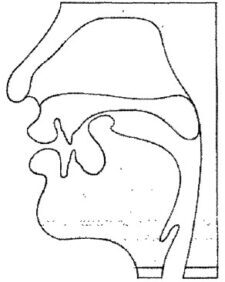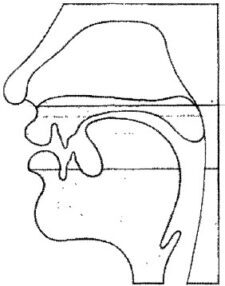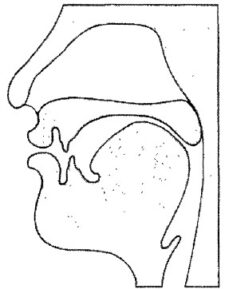Approximants
Approximants occur when one articulator moves close to another, but not close enough to cause friction or to stop the airflow. Note that / w / and / j / are sometimes referred to as ‘semi-vowels’. This is because they are made
without a restriction to the airflow, unlike the other consonants. But they act
in a consonant-like way; we say an apple, but we say a pear, a watermelon and
a jam. All three approximants are important linking sounds in connected
speech.
Voiced sounds like / r / are shown on a white background.
Characteristics
A post-alveolar sound, as the tongue tip is held just behind (not touching) the alveolar ridge. Back rims of tongue touch upper molars. The soft palate is raised. / r / is voiced.
Examples:
/ r / red, hurry, party*, car*
*pronounced in these positions in rhotic accents
Characteristics
A palatal semi-vowel. The tongue is in the position of a close front vowel (similar to / I / ). The soft palate is raised. The sound glides quickly to the following vowel. / j / is voiced. / j / does not occur as a final sound.
Examples:
/ j / yes, young, usual, few, queue, educate, suit
Characteristics
A labio-velar semi-vowel. The tongue is in the position of a close back vowel (similar to / u / ). The soft palate is raised. The sound glides quickly to the following vowel. / w / is voiced. / w / does not occur as a final sound.
Examples:
/ w / wood, walk, wet, wheat, hallway


